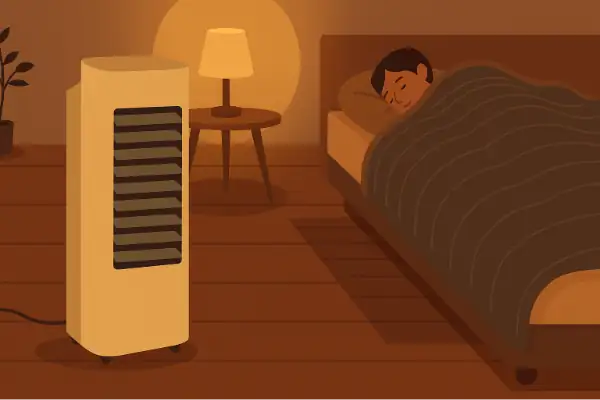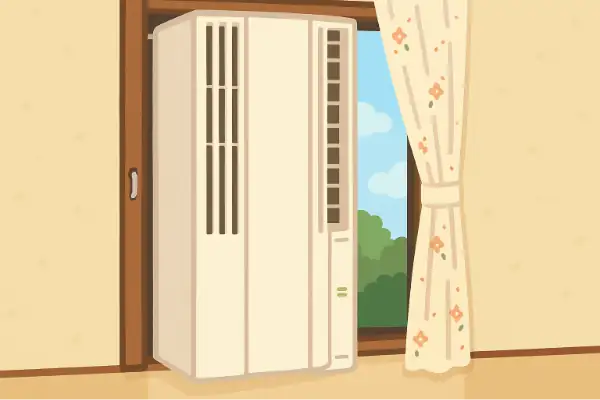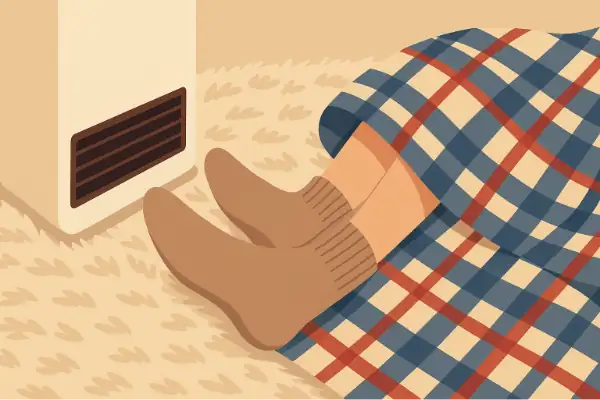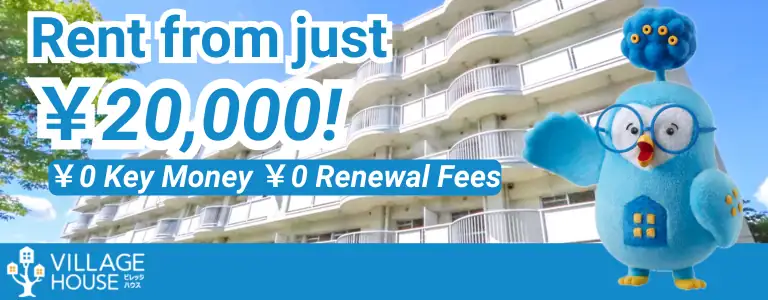Imagine the joy of finally finding your ideal home after carefully evaluating conditions such as the size, rent, interior, and exterior. But when you find that the property does not come with an air conditioner, you might hesitate or even walk away.
This article guides you through the installation of an air conditioner and even how to live comfortably without one. It will be especially helpful if you are considering an apartment without an air conditioner.
Village House offers affordable rental properties across Japan, with rents starting as low as ¥ 20,000. If you are looking for an affordable rental property, please visit our website.
Contact the landlord

Does the property information say, “no air conditioner”? No need to worry. It is still possible that the landlord did not have an air conditioner when he rented it out. There may be an air conditioner installed by the previous tenant.
The information provided on property listing sites typically reflects the condition of the property at the time the landlord rents it out. In some cases, the previous tenant might have left behind an air conditioner when moving out. So, it’s always a good idea to check with the landlord through the real estate agency.
Even if the apartment comes without an air conditioner, you can still negotiate with the landlord before moving in. You might be able to get the landlord to install one if you express your interest before signing the contract.
Check if you can install an air conditioner yourself

If the landlord does not agree to install an air conditioner, you can still inquire if you are allowed to install one at your own expense. However, when you move out, you will need to remove the air conditioner as part of restoring the property to its original condition. In some cases, you may be able to leave it as it is when you move out. Be sure to clarify these arrangements in advance of your move-out.
You may also need to check whether it is physically possible to install an air conditioner in the unit. This is not a problem in newer buildings, but in older properties, there may be restrictions due to wall structure, wiring, or the location of the outdoor unit.
You may not think that you need an air conditioner when you first move into the unit. But this perspective may change as the seasons change. It is a wise move to check whether it is possible to install one before moving in, as not having an air conditioner can be harmful to your health, especially in the summer.
Install an air cooler

Air coolers (cooling fans) are becoming a popular alternative for cooling rooms without air conditioners. The main advantage of air-coolers is that they can be easily installed without the need for any installation work.
The power consumption of a typical household air cooler is about 55W. When used for 8 hours a day, it will cost about ¥360 per month (*), which is much lower than the cost of running an air conditioner, helping you to save on your electricity bill.
However, air coolers are less effective compared to air conditioners when it comes to cooling indoor air, especially during the intense heat of midsummer. In addition, evaporative air coolers may increase indoor humidity, so humidity management is also important.
The effectiveness of an air cooler can also depend on its installation location and the overall environment. In rooms with poor ventilation or rooms exposed to direct sunlight, the cooling effect may be poor. So, be mindful of where you place the unit to maximize its cooling effect.
*The electricity rate is calculated at ¥31 per kWh.
Install a window-type air conditioner

Window air conditioners are a popular choice for cooling without the need for drilling holes in the wall and are easy to install. As the name suggests, it is installed on the window frame, so it is easy to use even in rental housing.
A typical window air conditioner (cooling only type) consumes about 550W of power, and the electricity cost per hour is about ¥17.05. So, if you use it for 8 hours a day, the electricity cost per day is about ¥136.4, and the electricity cost per month (30 days) is about ¥4,092 (*).
Window air conditioners have a higher cooling capacity than air coolers and can cool an entire room thoroughly, so you can stay comfortable even in the middle of summer. The outdoor unit is integrated into the unit itself, which saves space and can be easily removed and reused when moving out.
However, depending on the size and shape of the window, you may not be able to install a window air conditioner, so you may need to check the dimensions in advance. Some of them may cause vibration and some operating noise, so make sure that the model you purchase is quiet before purchasing.
Source:Docomodenki
*The electricity rate is calculated at ¥31 per kWh.
Use heating appliances other than air conditioners in winter

If you’re looking for heating options other than air conditioners for your rental home, consider the following.
Ceramic fan heater
- Features: Quickly heats a room by blowing out hot air using electricity.
- Advantages: Can heat the entire space.
- Disadvantages: Not suitable for large rooms, high power consumption.
- Suitable for: Heating small spaces such as changing rooms and toilets.
Oil heater
- Features: Heats a room by warming the oil inside the unit.
- Advantages: Air is less likely to dry out, and it is very quiet.
- Disadvantages: Takes time to heat an entire room.
- Suitable for: Those concerned about dry air caused by conventional heating.
Kotatsu
- Features: A heating element is placed under a table, which is then covered with a futon to retain heat.
- Advantages: High heat retention, so electricity costs can be reduced.
- Disadvantages: Cannot heat an entire room and requires space.
- Suitable for: Reducing electricity costs when used alongside a main heating source.
Hot carpet
- Features: Heats the carpet by passing electricity through embedded wires.
- Advantages: Reduces electricity costs, suitable for partial heating.
- Disadvantages: Not suitable for heating an entire room.
- Suitable for: Warming the cold floor areas of the unit.
Electric blanket
- Features: Uses electricity to heat a blanket through built-in wires.
- Advantages: Easy to carry and reduces electricity costs.
- Disadvantages: Heats only a part of a room, so it can be used as a supplementary heating device.
- Suitable for: Lowering the temperature of the main heating source while reducing overall electricity costs.
At Village House, there is no need to pay a deposit, key money, renewal fee, or handling fee (*). If you want to save on initial costs, please feel free to contact us.
*A deposit may be required depending on the contract contents and screening results.
Related articles:

Hello, I’m Machiko Doi, a freelance writer who writes about housing and living in Japan.
I live in an 80-year-old house that I inherited from my grandparents along with my two shelter cats and daughter.
We live a relaxed life while repairing the house.
I like to cook vegetables from the garden and fresh fish caught by my father, and enjoy them with cold beer on a hot day or hot sake on a cold day.



